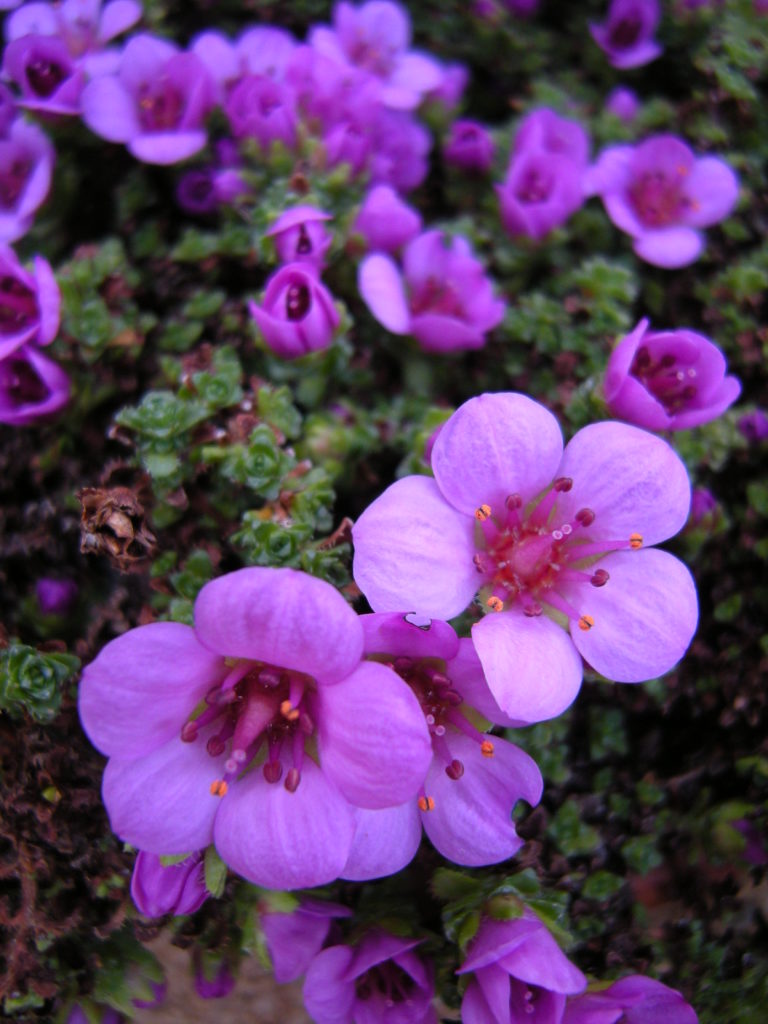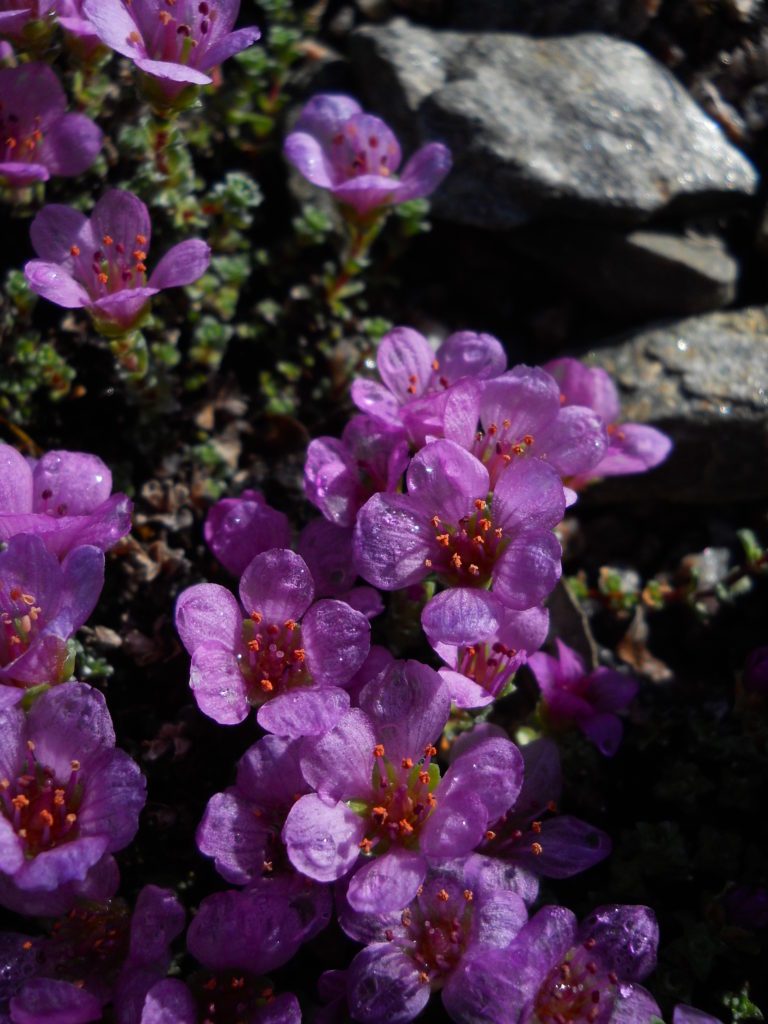As the snow melts Saxifraga oppositifolia (Purple saxifrage) is normally one of the first tribunes of spring, heralding winter’s end as its bright petals unfold. Throughout March, its tiny lilac-purple flowers cheerfully greet visitors to the Alpine House at the Royal Botanic Garden Edinburgh- look in the stone trough by the door facing the Palm House and the large trough behind the cold frames.

S. oppositifolia is a circumpolar species, common throughout the Arctic, but also found in high mountain ranges further south, such as the Alps. In Scotland, S. oppositifolia is typically found growing on rock faces, perched on mountain ledges or peering out between the scree. It is a rugged perennial alpine, growing in matts seldom more than 5cm high and flourishing on moist, well-drained ground.
While the common name in both English and Inuit is inspired by its colourful petals- the Purple Saxifrage or Aupilaktunnguat (‘bold bright spot’)- the scientific name describes the plant’s vegetative appearance offering a useful year-round clue to identification. The Latin Saxifraga oppositifolia translates as “stone-breaker with opposite leaves”- referring to how the tiny leaves are neatly arranged in opposite pairs on a plant which appears to split the very rocks it grows on.
S. oppositifolia is also edible, delighting not just the eyes but the tongue too. The flowers, although bitter when first placed on the tongue, taste sweet after a second or two. Inuit communities in Canada pick the flowers when wild berries are scarce for a sweet treat. The Inuit also brew a tea from the stems, while in the past, dried stems and leaves were added to their expensive tobacco to make it last a bit longer!
S. oppositifolia is not the only saxifrage flowering at present at the Botanics- there is a splendid display of early flowering saxifrages by the Alpine House.
Please note that with the Biomes construction works, the Alpine House is only open to the public from Friday to Sunday.

